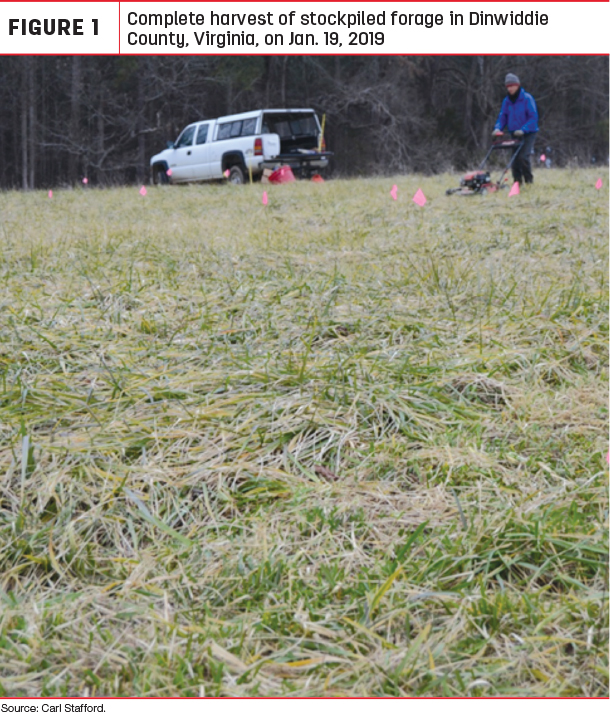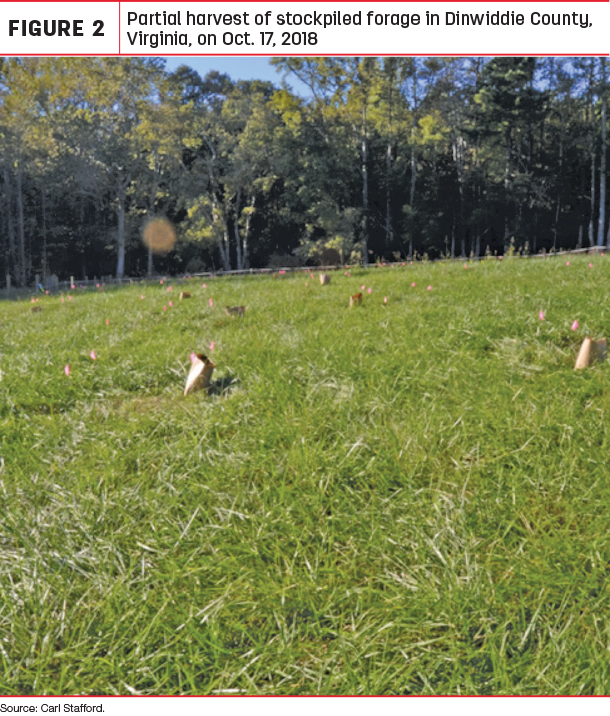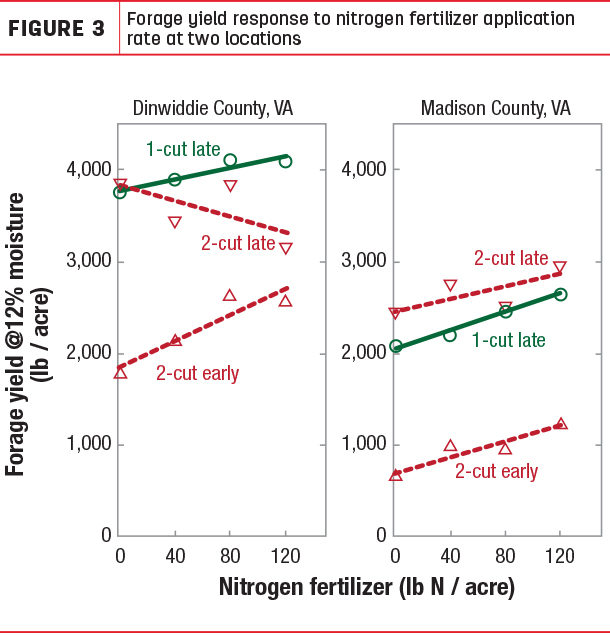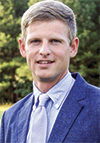Recommendations are to defer grazing once fertilized on a portion of pasture acreage to accumulate enough forage for grazing in the winter months. The recommendations are set, so there is no need to look further … or is there?
A team of researchers in Virginia and North Carolina set out to test whether these recommendations hold true or could be tweaked for better resource efficiency. Researchers asked two fundamental questions:
- How much nitrogen is needed to get maximum economic return from that investment?
- Is it better to wait until December before putting cattle onto stockpiled fescue or can adding an earlier flash-grazing period provide good return?
The nitrogen question
The need to apply nitrogen to pastures assumes the soil is not providing enough nitrogen. In many soils, this may be true, but is it always true? Research in the past few years throughout North Carolina and Virginia has informed us otherwise. In a series of trials conducted on several dozen fields throughout the region, about 75 percent of the sites did not yield an economic response to nitrogen fertilizer application. Yes, you read that correctly: Three out of four fields did not produce enough extra forage to be a better alternative than purchasing lower-cost hay.
This was possible because of an accumulation of organic nitrogen in the root zone during years of grazing and regrowth cycles. Think of it this way: Plant material contains nutrients removed during grazing but returned to the soil as organic matter (urine and dung). Soil bacteria and fungi decompose the nitrogen in this organic matter, releasing it back to the soil as inorganic nitrogen (ammonium and nitrate), which is available for new pasture growth.
This research shows we can measure the organic nitrogen available for pasture growth. Traditionally, this was not part of a routine part of a soil test because we did not have a quick, reliable method. Nitrogen mineralization is the process of turning organic nitrogen into inorganic nitrogen (i.e., turning complex organic matter into its simple mineral constituents). In previous and ongoing research, we found the potential for soil nitrogen mineralization was associated with a rapid, reliable and robust test of soil-test biological activity. The greater the level of soil-test biological activity, the less likely a pasture will produce more forage with application of nitrogen fertilizer.
The grazing question
The standard recommendation is to defer grazing of fall-stockpiled fescue until the onset of winter. We were curious whether a moderate harvest event in October followed by the complete harvest of the fescue later in winter would yield more forage. An intermediate flash-grazing event in mid-fall may allow cattle to utilize some forage, reset the leaf area index to an optimum level for growth and still allow enough heat units to accumulate additional forage for winter grazing.
Forages grow best with a full canopy of foliage present to capture sunlight. Too few leaves limit growth because not enough “solar panels” are present to convert all of the available light energy into chemical energy. Too many leaves can result in shading of some leaves. This concept may be measured through the leaf area index. Tall fescue growth is most efficient at a leaf area index of approximately 7 or when the pasture sward is approximately 10 to 12 inches tall.
The experiment
Two well-managed, rotationally stocked pastures were selected in Dinwiddie and Madison counties of Virginia. Researchers applied four rates of nitrogen from zero to 120 pounds per acre at the end of August 2018. Simulated grazing treatments were the control or standard recommendation, which was a single harvest in mid-December to mid-January down to a 2-inch residual height (Figure 1); and (2) the double-grazed system with a first cutting in early October to a 5-inch residual height (Figure 2) followed by second cutting down to a 2-inch residual height in mid-December to mid-January.


Nitrogen results
Forage yield generally increased with increased nitrogen rate at both sites, but the change was not dramatic (Figure 3).

At the Dinwiddie County site, nitrogen application in the standard one-cut system led to an increase of 3 pounds of forage per unit of nitrogen. The early cutting of the two-cut system resulted in the most dramatic yield response to nitrogen application, returning 7 pounds of forage per unit of nitrogen.
However, the negative yield response to nitrogen in the second cut negated the early yield response, resulting in an average yield response to nitrogen in the two-cut system of 3 pounds of forage per unit of nitrogen. All of the yield responses at the Madison County site were less than 5 pounds of forage per unit of nitrogen, independent of timing and frequency of cutting.
Based on economics of fertilizer cost and value of forage, yield of less than 10 pounds of additional forage per unit of nitrogen would have been wasted investment. Soil-test biological activity was medium to high for both fields, suggesting substantial nitrogen mineralization was occurring in both fields. Economic response to additional nitrogen already present in the pastures did not occur.
Grazing results
Across nitrogen rates, the two-cut system produced approximately 1,000 to 2,000 pounds more forage per acre than the one-cut system at both sites. Generally, the late cutting in the two-cut system produced as much forage as the one-cut system total. The early cutting in the two-cut system could be considered a bonus harvest. Removing excess forage early in the fall growth period was beneficial to allow newly growing leaves to capture more sunlight.
Interpretations
Rainfall was abundant in the fall of 2018 in Virginia. Research was conducted only on two sites. Due to abundant rainfall, potential growth was rapid early in the fall growing season. Both nitrogen and grazing results indicate some potential to improve economics in winter beef cattle systems.
In this instance, purchasing adequate-quality hay to provide additional forage may be a better option than spreading nitrogen on non-responsive fescue pastures in August. The two-cut or two-graze system suggests opportunity to produce additional forage for very little cost compared to current standard university recommendations of deferring grazing until early winter when moisture is abundant. ![]()
Alan Franzluebbers is with the USDA-Agricultural Research Service, Raleigh, North Carolina. Gabriel Pent is with Virginia Tech, Southern Piedmont Ag Research and Extension Center, Blackstone, Virginia. Carl Stafford is with the Virginia Cooperative Extension, GW Carver Agriculture Research Center, Culpeper, Virginia.
Robert Shoemaker is with the Virginia Department of Conservation and Recreation in Warrenton, Virginia.









